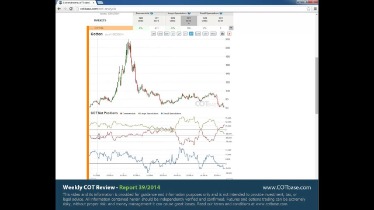Content

You can do this in a tax-advantaged account like a 401(k), IRA, HSA, or 529 plan. You could also open a taxable brokerage account to purchase an S&P 500 index fund. Index funds allow you to invest money on an automated recurring basis, but if you’d prefer to invest manually you could go with an S&P 500 ETF.
- First, you need a brokerage account, then you need to decide which fund you want to buy, and lastly, you need to make your first purchase of that fund!
- Thereafter, the index doubled in value in just under two years, reaching an all-time high of over 4,800 in January 2022.
- If you go with a financial advisor, they will buy stocks or funds for you after discussing with you.
- S&P 500 index funds or ETFs will track the performance of the S&P 500, which means when the S&P 500 does well, your investment will, too.
This site does not include all companies or products available within the market. The S&P 500 is commonly used as a benchmark to measure the U.S. stock market performance overall. If you hear an expert say or read an article that references how stocks are doing, there’s a good chance that person is actually referring to how the S&P index is doing. Apart from market cap, stocks are categorized by the industry, how much dividend they pay, how quickly they are growing, among others. That’s precisely the opposite of stock trading, which involves dedication and a great deal of stock research.
The different ways to invest in the stock market
If you research a company and choose to invest in it, think about why you picked that company in the first place if jitters start to set in on a down day. Once you have a preference in mind, you’re ready to shop for an investment account. For the hands-on types, this usually means a brokerage account. For those who would like a little help, opening an account through a robo-advisor is a sensible option.
It gets a lot of attention because it provides a helpful snapshot of the overall health of the market. How those 500 companies go, so goes the economy, the thinking…goes. Specifically, an index is a tool (like a magnifying glass) used to examine what’s happening in a stock market.
It’s up to you to decide which is a better fit for your portfolio. An index fund is a group of stocks or bonds that track a certain stock market index. They may not be the most exciting investment, but they’re a powerhouse when it comes to building wealth. Building a diversified portfolio helps investors manage risk by spreading their investments across different companies, sectors and countries.
How much does it cost to invest in the S&P 500?
Finally, another option that has exploded in popularity in recent years is the robo-advisor. A robo-advisor is a brokerage that essentially invests your money on your behalf in a portfolio of index funds that is appropriate for your age, risk tolerance, and investing goals. Not only can a robo-advisor select your investments, but many will optimize your tax efficiency and make changes over time automatically. This custom-tailored advice justifies the higher fees that they typically charge, compared to other brokers. These can include a percentage of your transactions, a percentage of your assets under management, and sometimes, a yearly membership fee. The S&P 500 is a stock market index that tracks the performance of 500 of the largest U.S. public companies by market capitalization—or the total value of all their outstanding shares.

Stock traders attempt to time the market in search of opportunities to buy low and sell high. The other option, as referenced above, is a robo-advisor, which will build and manage a portfolio for you for a small fee. Choose the option below that best represents how you want to invest, and how hands-on you’d like to be in picking and choosing the stocks you invest in. While these steps alone will not guarantee you complete financial independence, I believe they’re a great starting point. They can help you amass savings, achieve portfolio diversification, and empower you to start building wealth for a better financial future. This means they generally operate in ways that are uncorrelated with each other and with more traditional investments like stocks and bonds, so they may be going up when stocks are going down.
How to Invest in the S&P 500 Stock Market Index
While the stock market will almost certainly rise over the long run, there’s simply too much uncertainty in stock prices in the short term — in fact, a drop of 20% in any given year isn’t unusual. In 2020, during the COVID-19 pandemic, the market plunged by more than 40% and rebounded to an all-time high within a few months. With an ETF or mutual fund, you just have to purchase one fund rather than each individual stock, says Meade. Blueprint is an independent, advertising-supported comparison service focused on helping readers make smarter decisions. We receive compensation from the companies that advertise on Blueprint which may impact how and where products appear on this site.
Now, just about every major brokerage and fund company has an S&P 500 index fund. This sum should stay somewhere with low risk like a bank account, and it should remain liquid (i.e., cash or something else that’s always available to you) to ensure you can access it if you ever need it. Once you’ve established an emergency fund, invest future savings based on your risk tolerance. Stocks, on the other hand, are small pieces of equity in a company. When a company goes from private to public, its stock can be publicly bought and sold on the market — meaning it is no longer privately owned.
Bonds
However, in reality, these indexes have provided nearly identical stock market performance over time. The chart below compares Vanguard’s S&P 500 ETF (VOO) and its total stock market ETF (VTI). As you can see, the lines are so similar, it’s often hard to even tell them apart.

For the beginning investor, mutual fund fees may be more palatable compared to the commissions charged when you buy individual stocks. Plus, you can invest less to get started with a fund than you’d probably pay to invest in individual stocks. Investing in an S&P 500 index fund is a great way to diversify your portfolio.
Once you’ve started building up a portfolio of stocks, you’ll want to establish a schedule to check in on your investments and rebalance them if need be. This is the reason why an increasing number of investors are turning to index funds and ETFs that simply try to match the performance of this index. All of the advice about investing in stocks for beginners doesn’t do you much good if you don’t have any way to actually buy stocks.
Discover what their pros and cons are, and which index fund is right for you. Both account types will allow you to buy stocks, mutual funds, and ETFs. The main considerations here are why you’re investing in stocks and how easily you want to be able to access your money. Full-service brokers provide a broad array of financial services, including financial advice for retirement, healthcare, education, and more.
As young investors grow older and need to reduce the risk in their portfolios, they should reduce their investment in stocks and increase their investment in bonds. When a company issues bonds on the market, they are basically asking investors for loans to raise money for their organization. Investors buy the bonds, then the company pays them back, plus a percentage of interest, over time. Rebalancing helps ensure your portfolio stays balanced with a mix of stocks that are appropriate for your risk tolerance and financial goals.
If you want an advanced approach to S&P 500 fund investing, consider smart beta indexes. These options have lower costs and offer the advantage of fundamental or customized investing. Examples of such funds include the AAM S&P 500 High Dividend Fund (SPDV) and the S&P 500 Equal Weight Index Fund (RSP). You can also target index segments that offer capital appreciation potential, with funds like the SPDR sector series or dividend-focused funds. If you want an inexpensive way to invest in S&P 500 ETFs, you can gain exposure through discount brokers.
“There are other areas of the market you need in order to build a diversified portfolio, such as small-caps, mid-caps and international stocks,” says Favorito. Interestingly, the very first ETF launched in the U.S. was an S&P 500 fund, the State Street SPDR S&P 500 ETF (SPY). Today, the SPY remains the biggest exchange-traded fund in the world by assets and the most https://g-markets.net/helpful-articles/can-you-start-trading-forex-with-just-100-2/ widely traded ETF. “When you buy the S&P 500, 90% of the time you’re likely to outperform an active portfolio manager picking large-cap stocks,” says Joe Favorito, managing partner at Landmark Wealth Management. On one hand, they could be referring to the Nasdaq Composite Index, which tracks every company that’s listed on the tech-heavy Nasdaq stock exchange.
The Dow Jones is a price-weighted index based on the share price of companies, rather than their market capitalisation (as for the S&P 500). In addition, it excludes transportation and utilities companies. Investing in equities, such as the S&P 500 index, should also be seen as a long-term investment of at least five years, to smooth out cycles within the stock market. Overall, investors should look to diversify their portfolio across a range of different assets and sectors to reduce the overall risk and volatility of their portfolio. The price attached to the index is based on the combined market capitalisations of all of the companies in the index divided by a value which originally set the index to a base level of 100. There are many ETFs that track the S&P 500 to choose from, like the SPDR S&P 500 ETF Trust and the iShares Core S&P 500 ETF.
Companies in the S&P 500
On the other hand, if you don’t like big fluctuations in your portfolio, you might want to modify it in the other direction. Here’s a step-by-step guide to investing money in the stock market to help ensure you’re doing it the right way. “It makes sense to invest in an ETF when you prefer flexibility in trading throughout the day, as ETFs trade on exchanges like stocks,” DiManno adds. If the fund realizes a gain, it must pass it on to shareholders.